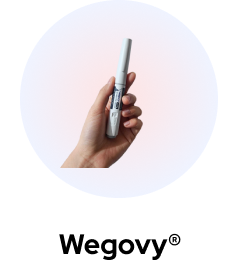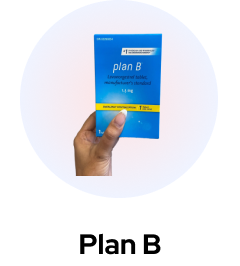Here’s everything you need to know about Tirzepatide dosage, including recommended dosing regimens, administration guidelines, dosage adjustments, and potential side effects.
Whether you’re a healthcare professional prescribing Tirzepatide or an individual considering this treatment option, join us as we navigate the intricacies of Tirzepatide dosing to empower informed decision-making and optimize patient outcomes.
What is Tirzepatide?
Tirzepatide represents a cutting-edge advancement in the treatment of type 2 diabetes and obesity. This medication belongs to a class of drugs known as dual glucose-dependent insulinotropic polypeptide (GIP) and glucagon-like peptide-1 (GLP-1) receptor agonists.
By activating both GIP and GLP-1 receptors, Tirzepatide effectively regulates blood sugar levels, enhances insulin sensitivity, promotes weight loss, and offers potential cardiovascular benefits. Its unique mechanism of action sets it apart as a promising therapeutic option for individuals seeking comprehensive management of their diabetes and obesity.
How Does Tirzepatide Work?
Tirzepatide operates through a multifaceted mechanism to address both diabetes and obesity. As a dual glucose-dependent insulinotropic polypeptide (GIP) and glucagon-like peptide-1 (GLP-1) receptor agonist, it targets two key pathways involved in glucose metabolism and appetite regulation.
By activating GIP receptors, Tirzepatide stimulates insulin secretion in response to elevated blood sugar levels, promoting glucose uptake and reducing hyperglycemia. Additionally, its activation of GLP-1 receptors enhances insulin sensitivity, slows gastric emptying, and suppresses appetite, leading to weight loss.
This dual action not only improves glycemic control but also aids in achieving sustainable weight reduction, making Tirzepatide a promising therapeutic option for individuals with type 2 diabetes and obesity.
Tirzepatide Dosing Information
Tirzepatide dosing varies depending on individual needs and treatment goals. Typically, it is administered subcutaneously once a week. The initial dose is often lower to minimize the risk of gastrointestinal side effects, with gradual titration to a maintenance dose over several weeks.
Dosage adjustments may be necessary based on factors such as renal function, tolerability, and therapeutic response. It’s crucial to follow the prescribing healthcare provider’s recommendations and undergo regular monitoring to optimize treatment outcomes and ensure safety.
Usual Adult Dose
- Initial dose: 2.5 mg subcutaneously once a week
- After 4 weeks: The dosage should be increased to 5 mg subcutaneously once a week.
For additional control: Increase dosage in 2.5 mg increments after at least 4 weeks on current dose.
As we consider advanced treatment options beyond traditional therapies, exploring alternatives to common medications like metformin becomes crucial. Learn about effective metformin alternatives that can help with potentially fewer side effects.
- Maximum dose: 15 mg subcutaneously once a week
Usual Dose for Weight Loss (Adult)
- Initial dose: 2.5 mg under the skin (subcutaneously) once a week.
- After 4 weeks: The dosage should be increased to 5 mg subcutaneously once a week.
- Further dose increases: After at least 4 weeks on the current dose the dosage may be increased in 2.5 mg increments.
- Recommended maintenance dose: 5 mg, 10 mg, or 15 mg injected subcutaneously once weekly.
- Maximum dose: 15 mg subcutaneously once a week.
Renal Dose Adjustments
Renal dysfunction: No adjustment recommended.
Renal function should be monitored when starting or escalating doses in patients with renal dysfunction reporting severe adverse GI reactions.
Liver Dose Adjustments
Liver dysfunction: No adjustment recommended.
For those interested in exploring similar treatments, understanding the dosing of other medications like Mounjaro is vital. For comprehensive details on Mounjaro, including dosage recommendations, visit our complete guide on Mounjaro dosage.
Tirzepatide Dosage Chart for Mounjaro vs Zepbound
Features | Zepbound | Mounjaro |
Dosage Form | Subcutaneous injection | Subcutaneous injection |
Dosage | Start dose: 2.5 mg, increased to 5 mg, 10 mg, then 15 mg | Start dose: 2.5 mg once weekly, then increased to 15 mg |
What Should You Do If You Miss a Dose of Tirzepatide?
If you miss a dose of this medicine, take it as soon as possible. However, if it is almost time for your next dose, skip the missed dose and go back to your regular dosing schedule. Do not double doses.
If you miss a dose, use it as soon as possible within 4 days after your missed dose. If you miss a dose for more than 4 days, skip the missed dose and go back to your regular dosing schedule.
What Happens If You Overdose?
Patients who overdose on tirzepatide should be monitored for any changes in clinical status. As this medication has a long half-life, patients may require prolonged monitoring. Clinicians should contact poison control, and consultation with a toxicologist may be necessary.
Side Effects of Tirzepatide
- Nausea
- Diarrhea
- Vomiting
- Constipation
- Abdominal pain
- Decreased appetite
- Fatigue
- Injection site reactions (e.g., redness, itching)
- Hypoglycemia (low blood sugar)
- Pancreatitis (inflammation of the pancreas)
- Kidney problems
- Dehydration
While discussing various medication regimens, it’s crucial to understand emergency interventions for severe allergic reactions. Discover how epinephrine auto-injectors can be lifesaving in emergencies by visiting our page on the uses of epinephrine auto-injectors.
Can You Change Your Tirzepatide Injection Day?
You may change the day of the week you inject tirzepatide as long as at least 3 days have passed between doses. You may administer insulin in the same area as tirzepatide but they should not be given right next to each other. Also, you should not mix tirzepatide and insulin in the same injection.
How to Store Tirzepatide
Tirzepatide should be stored in its original packaging in the refrigerator at a temperature between 36°F to 46°F (2°C to 8°C). Do not freeze tirzepatide, and avoid exposing it to excessive heat or sunlight. Once removed from the refrigerator, tirzepatide can be kept at room temperature (up to 86°F or 30°C) for a maximum of 30 days.
Ensure that the medication is kept away from children and pets, and do not use tirzepatide beyond the expiration date printed on the packaging. If there are any concerns about storage or handling, consult a healthcare professional or pharmacist for guidance.
Key Takeaways
- Tirzepatide is a cutting-edge medication, belonging to the class of dual glucose-dependent insulinotropic polypeptide (GIP) and glucagon-like peptide-1 (GLP-1) receptor agonists.
- The dosing regimen for Tirzepatide typically involves subcutaneous injections once a week, starting with a lower initial dose and gradually titrating up to a maintenance dose based on individual needs and tolerability.
- Side effects of Tirzepatide may include nausea, diarrhea, vomiting, constipation, abdominal pain, decreased appetite, fatigue, injection site reactions, hypoglycemia, pancreatitis, kidney problems, and dehydration.
Frequently Asked Questions
How is Tirzepatide Dosage Increased?
Tirzepatide dosage is typically increased gradually over several weeks, starting with a lower initial dose and titrating up every few weeks based on individual response and tolerability.
What is the Usual Starting Dose of Tirzepatide?
The usual starting dose of Tirzepatide is 2.5 mg administered subcutaneously once a week.
Are There Any Special Considerations for Tirzepatide Administration?
Yes, Tirzepatide should be administered subcutaneously once a week. It’s important to follow the prescribed dosing regimen and any instructions provided by the healthcare provider.













 (US)
(US)